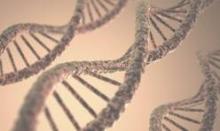Women with inherited loss-of-function mutations in the PALB2 gene were more than nine times as likely to develop breast cancer, compared with the general population, according to a large multicenter study reported Aug. 6 in the New England Journal of Medicine.
The study showed that women with germline loss-of-function PALB2 mutations had a 14% cumulative risk of breast cancer by age 50 years and a 35% risk by age 70, said Antonis C. Antoniou, Ph.D., of the University of Cambridge, England, and his associates.
"On the basis of our estimates, the breast-cancer risk for a PALB2 mutation carrier, even in the absence of a family history of breast cancer, would be classified as high according to various guidelines. This level of risk may justify adding PALB2 to genetic testing for BRCA1 and BRCA2," the researchers said.
Germline PALB2 mutations affect about 0.08% of the population and are a known risk factor for breast cancer. To better characterize lifetime risk in PALB2 mutation carriers, the researchers studied 154 families in the United Kingdom whose 362 members had inherited harmful truncating, splice, or deletion mutations in PALB2 (N. Engl. J. Med. 2014;371:497-506). The cohort included 311 women, of whom 229 had breast cancer, the researchers said.
After controlling for other familial factors, the risk of breast cancer in PALB2 mutation carriers was 9.47 times (95% confidence interval, 7.16-12.57) greater than in the United Kingdom overall between 1993 and 1997, the investigators reported.
Risk correlated inversely with age and also was affected by family history of breast cancer, they found. Women with the mutation whose first-degree relatives were cancer free had a 33% risk of breast cancer at age 70 years (95% CI, 25%-44%), but this risk was 58% if the women had at least two first-degree relatives who developed breast cancer by age 50 years (95% CI, 50%-66%), Dr. Antoniou and his associates said.
"Our study includes most of the reported families with PALB2 mutation carriers, as well as many not previously reported, but it is still based on small numbers," Dr. Antoniou and associates said. As screening for these mutations enters clinical practice, more families with the PALB2 mutation will be identified and risk estimates can be refined, they said, adding that future studies should evaluate whether the heightened breast cancer surveillance that women with BRCA2 mutations receive can affect outcomes in women who carry the PALB2 loss-of-function mutation.
The study was funded by the European Research Council and 25 other nonprofit and governmental entities in Europe, the United States, Canada, and Australia. Two authors reported being listed on patents related to breast cancer susceptibility genes. The authors disclosed no other conflicts of interest.


